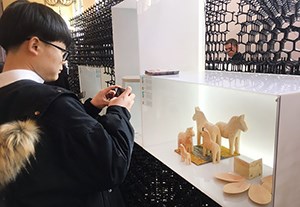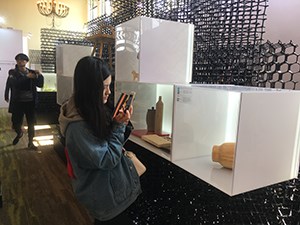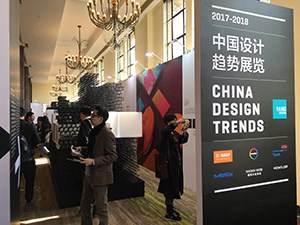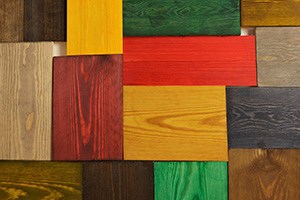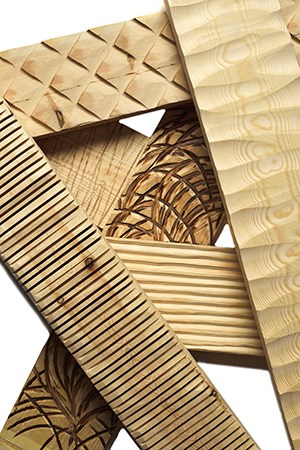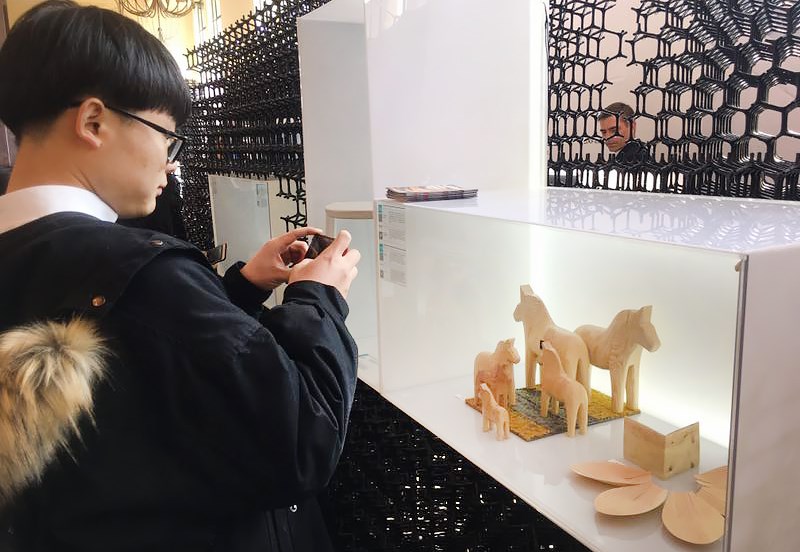
The Chinese middle class and the wealthy younger generation, well-educated and with unique personal tastes, are focusing more and more on consumer experiences and the story behind the products they buy. And they are willing to pay extra for products that reflect their personal aesthetic preferences. The shortage of craft artisans in China is encouraging the Chinese brands to shift to the high-end market segments and manufacture products of high quality that can be tailored to the customer’s preferences – known as premium craftsmanship.
This is how the trend for “Playful Craftsmanship” is described in the China Design Trends Report, produced by the Chinese design and trend analysis company Yang Design. This trend was one of four that were exhibited in the China Design Trends Gallery. Swedish pine was the dominant material in the portrayal of the “Playful Craftsmanship” trend.

“The trend clearly fits in with the tendency we are seeing in China and other countries for consumers to become increasingly conscious of the story behind the product they are buying. The material is an important part of that story and Swedish wood is the perfect fit for consumers who demand honest, natural and sustainable materials. Swedish wood is a renewable material sourced from sustainably managed Swedish forests, where at least two trees are planted for every one that is harvested. Swedish pine is also a high-quality material that is easy to craft and work with, making it excellent for both artisanal crafts and industrial production,” says Charlotte Dedye Apelgren, Director of Interior and Design at Swedish Wood.
This is the first time that the regular China Design Trends Report has been presented as an exhibition. This came about as a response to the design world’s questions about which products are appropriate for China’s future market and how abstract trends can be converted into concrete product design.
“The most challenging part is how to transfer the abstract concepts into colour, material and finish that correspond to every trend theme, in order to present the trends visually,” comments Yang Design’s Strategy Director Xiaojing Huang.
The pine products on show in the China Design Trends Gallery in Shanghai included vases, Dala horses and a small console table. Also on display were a range of treated pine surfaces that had been worked or coloured in various ways. The coloured surfaces were stained in red, dark brown and black.
In addition to “Playful Craftsmanship”, the China Design Trends Report identifies the following trends:
“I Dimension”: The younger generation, born in the 1990s, have now become mainstream consumers, but with a unique and avant-garde style. They live a connected life, they live in the moment, they indulge in self-interest and are sensitive, but they express strong emotions, for example through emojis. Normal life is full of craziness and radical responses.

“Fine Distance”: Almost drowning in a deluge of material and information, consumers want to reduce their anxiety levels and seek a more spiritual existence. Short meditation camps are becoming popular among stressed office workers, for example. Within this trend, design embraces new technology and is elitist, powerful, premium, with a sense of ceremony.

“Sense Beyond”: The stresses that people feel about issues such as global security, the national economy and air pollution are making them long for safety and protection. New technologies such as biotech and biointelligence are fulfilling this need. Design is open to endless possibilities through the new materials and new applications.

About Design Shanghai
Design Shanghai is described as Asia’s leading international design event. Aimed at designers, the event showcases all the latest in the world of design. Design Shanghai was held on 8-11 March 2017 and this year attracted a record 10,000 visitors each day. Over 400 exhibitors representing the world’s best known design brands had stands across a total of five halls. In excess of 1,000 design works were unveiled for the first time at the event.
About Swedish forestry
70% of Sweden’s land area is forested. Sweden pursues a policy of sustainable forestry, which requires that at least two trees are planted for every one tree that is harvested. Only 1% of the forest is harvested each year, and Sweden’s annual harvest is less than the annual growth in the nation’s forests. Over the past 90 years, the volume of standing forest has doubled in Sweden.






